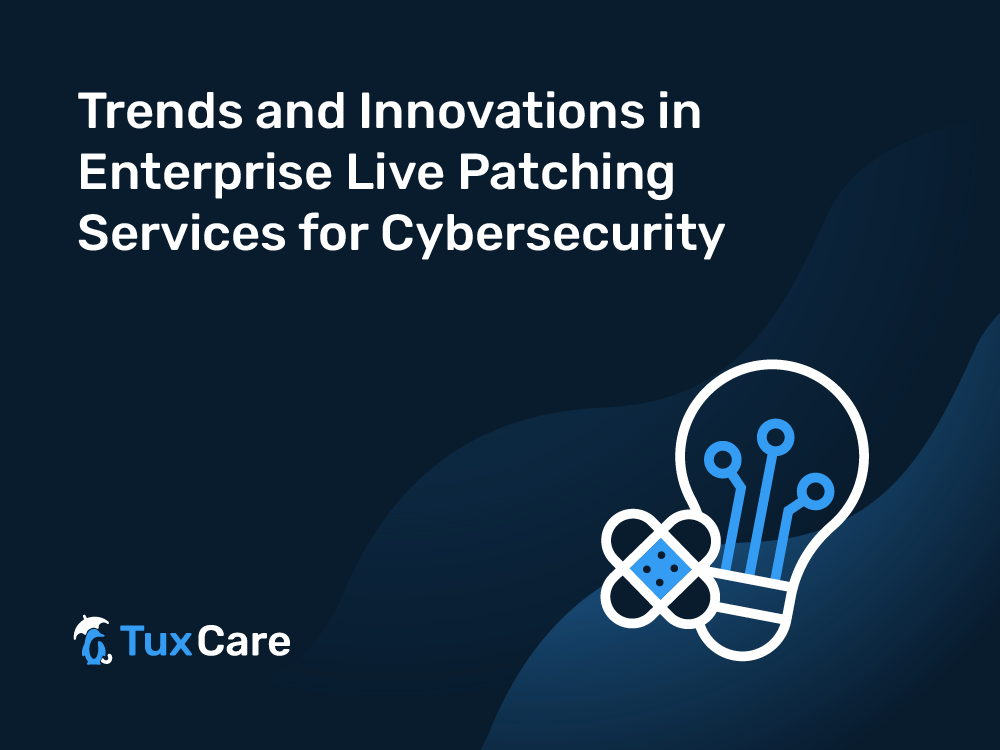Trends and Innovations in Enterprise Live Patching Services for Cybersecurity
- Live patching plays a vital role in helping enterprises stay secure
- Live patching is becoming crucial for maintaining compliance with various data privacy standards and regulations
- TuxCare’s Extended Lifecycle Support program includes live patching services for end-of-life Linux systems
Cyber threats have become more sophisticated and the traditional methods of patching are proving to be impractical – causing downtime as well as lost productivity and revenue. In the relentless game of cybersecurity, live patching has emerged as a game changer and is becoming an essential part of every enterprise security strategy.
Live patching, as the name suggests, allows you to apply security updates to running systems without having to restart them. It is imperative for businesses where even small disruptions can result in greater consequences. By enabling enterprises to update and patch software quickly without any reboots, it helps them mitigate vulnerabilities and lower the risk of cyberattacks. However, the field of live patching is constantly evolving and has seen tremendous growth in recent years.
This article will explore emerging trends and innovations in enterprise live patching services, offering insights into this constantly changing environment.
Automation
Gone are the days of manual patching, which is often a time-consuming and error-prone process. Enterprise live patching services have become automated and they even seamlessly integrate with organizations’ existing automated security workflows. The patches are applied and systems are updated immediately without human intervention.
By automating the patch deployment with TuxCare’s KernelCare Enterprise, cybersecurity teams can focus on more strategic aspects of threat mitigation and overall system security. KernelCare supports many Linux distributions, which includes all popular enterprise distros like Ubuntu, Debian, CentOS, AlmaLinux, RHEL, Oracle Linux, Rocky Linux, and many more.
Patching Beyond the Kernel
Traditionally, live patching focused on the Linux kernel, the core of the operating system. However, the frontiers have greatly expanded. Leading providers like TuxCare are now offering live patching services for user-space applications, shared libraries like glibc and OpenSSL, IoT devices, and even virtualization systems. This broader scope gives enterprises a more comprehensive security shield.
Real-Time Patching Capabilities
Organizations had to schedule downtime for applying software and system patches, leaving their systems vulnerable during the process. One of the significant innovations in enterprise live patching services is the shift towards real-time patching capabilities. This allows enterprises to apply critical patches without disrupting the ongoing operations, ensuring continuous availability and reducing the window of vulnerability exposure.
Real-time patching is the major advantage of live patching, which enables the dynamic updating of software components while the system is still running. It not only enhances security but also minimizes business service disruptions, an important factor for enterprises striving for uninterrupted operations.
Security Analytics
Another noteworthy development in enterprise live patching services is the use of enhanced security analytics tools. These tools help to identify patterns and anomalies indicative of potential security threats. Organizations can obtain detailed insights into their cybersecurity posture and make informed decisions about patch prioritization.
Some other trends in the enterprise live patching services include:
- As containerization becomes more prevalent, live patching solutions are being adapted to work seamlessly within containerized workloads.
- Live patching is becoming increasingly crucial for addressing zero-day vulnerabilities, which are patched before traditional security updates are available.
- Live patching has emerged as a key tool for ensuring compliance as data privacy and security regulations have become stricter.
Final Thoughts
The landscape of enterprise live patching services is witnessing a rapid evolution driven by the need for real-time security solutions in an increasingly complex digital environment. Organizations are adopting innovations such as automation, real-time patching, extended lifecycle support, and security analytics to bolster their cybersecurity defenses.
As the threat landscape continues to evolve, keeping up with these new developments is essential for businesses looking to fortify their systems and protect sensitive data from increasingly sophisticated cyber threats.
Speak to a TuxCare Linux security expert to integrate live patching to your own organization’s cybersecurity strategy.



 Documentation
Documentation Login
Login




